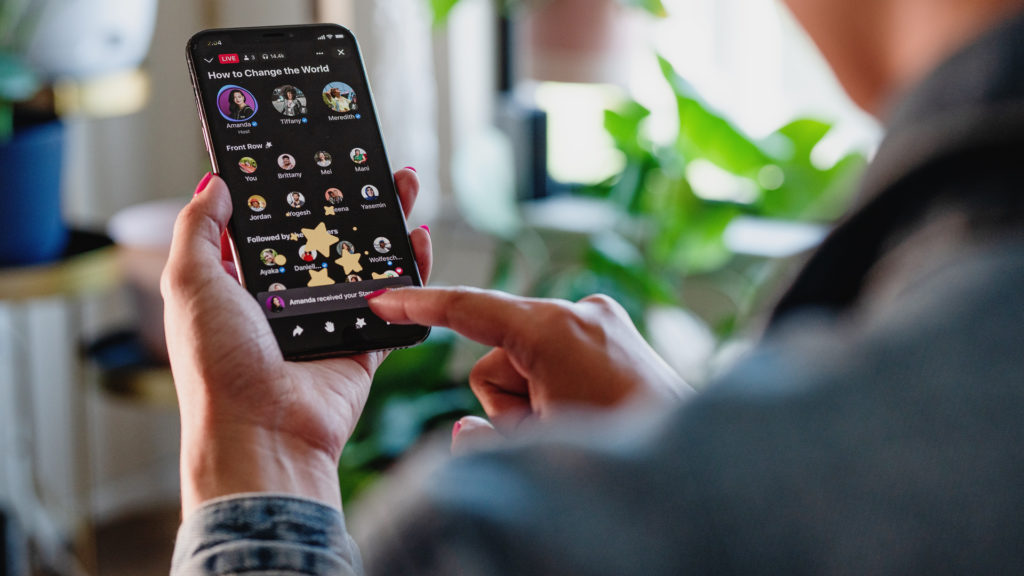Paul Kelly, Chief Revenue Officer, A Million Ads
Whenever a new service opens up, advertisers always wonder how they can tap into the attention it receives. The launch of Facebook’s Live Audio Rooms, though, should be treated more as a wakeup call. Brands need to ask themselves, have they got their audio strategy in place? If not, why not?
If they haven’t, brands need to start wondering what their tone of voice should be, what they have to say, what channels are their customers interested in and which of their channels need work. The lack of action comes from a misconception that the internet is all about video, meaning the boom in audio has taken some brands by surprise.
According to eMarketer, the average US adult will devote 11.7% of their media consumption to digital audio this year, which is roughly 1 hour and 34 minutes per day on average. This year is also going to see a tipping point where the proportion of time spent on digital audio will overtake traditional radio listening for the first time.
This surge in audio has been looming for a while, but it has taken services such as Clubhouse and now Facebook’s Live Audio Rooms to make advertisers take notice. It is hardly surprising because, when you think about it, social audio is the perfect medium. People have got Zoom fatigue, they don’t always want to be watching something, they give their greatest attention when listening, exploring their interests through audio, the theatre of the mind. What could be more powerful?
Communities above consumers
The first point to note, though, is that unlike other forms of audio, when it comes to social audio, it isn’t necessarily about the advertising opportunity for brands. Audio is where people indulge their passions and interests. Like any similar internet channel, such as Reddit, they build very strong communities with likeminded people. They have ‘gatekeepers’ and they usually don’t want to let advertising in. Anyone who thinks that this is Facebook, and so advertising will surely follow, needs to ask themselves, where’s the advertising on WhatsApp?
Some may wonder, then, what is the point of having a strategy if Facebook’s move into social audio is unlikely to lead to advertising spots being opened up? That, however, would be missing the point. Any brand that sees audio listeners as walking, talking wallets will fail. Brands cannot come to audio rooms looking to sell. Instead, they need to seek out the opportunity to have a meaningful two-way dialogue with customers and find out more about them. In essence it’s about building connections and speaking to these customers on an individual level.
And this is where social audio comes in, as by definition, it’s a two-way conversation. It’s this aspect which offers brands the biggest opportunity and, to be frank, it’s only a huge opportunity for those brands which are authentic and authoritative enough for people to want to listen to what they have to say.
Indeed these brands will find social audio a massive opportunity to establish regular audio rooms where they can really delve into telling their brand story and help people share their passion for a subject.
You can imagine Harley Davison, for example, having a regular live audio room set aside to discuss great bike trips and the freedom of exploring the open road. A wine merchant might want to take listeners on a tour around the great wine growing regions of the world. It’s the perfect channel for D2C brands to share their passion for a category and tell their brand story.
Building connections
The key here is to break the cycle of thinking where brands have convinced themselves that live video is the only way to connect with people online. Social audio offers a new way to connect to listeners, so long as brands offer a better value exchange for consumers. It’s an opportunity that is only going to keep on growing because it takes away a lot of the barriers that prevent consumers from being in touch with brands. In fact, latest research from Mediapost shows people are fatigued by video and repetitive advertising all day in their working life; they want to relax more. Social audio is the perfect place for consumers to have a voice and be creative, but not feel compelled to watch a screen or put on a smart top to be seen on video.
It’s therefore not surprising that Spotify is also following suit with the launch of Spotify Green Rooms, engaging with consumers by launching a Creator Fund which pays those who most frequently create rooms within the new platform. The platform is less exclusive than the likes of Facebook’s Audio Rooms, as participants do not have to be Spotify members to join; but they will benefit from exclusive content from artists and influencers.
Ultimately social audio is a new way to start a conversation and get closer to consumers through storytelling. Brands that try to barge through the door and push hard on sales will falter. The businesses that will prosper in the age of social audio are those who take the opportunity to talk and listen, and build advocacy and trust. Have you got your audio strategy and brand voice in place?
*A Million Ads is a client of Bluestripe Media, owned by Bluestripe Group, the owner of NDA.









